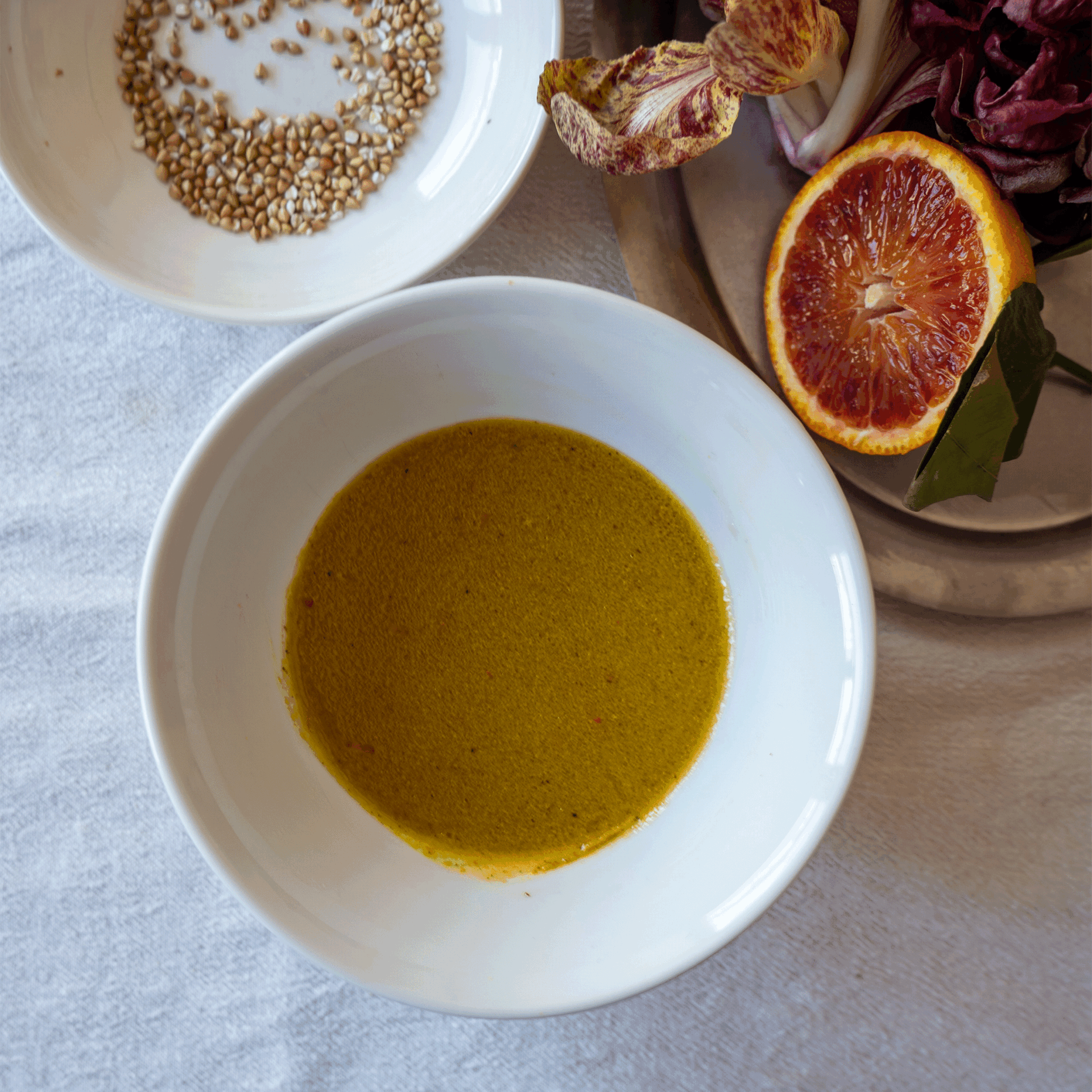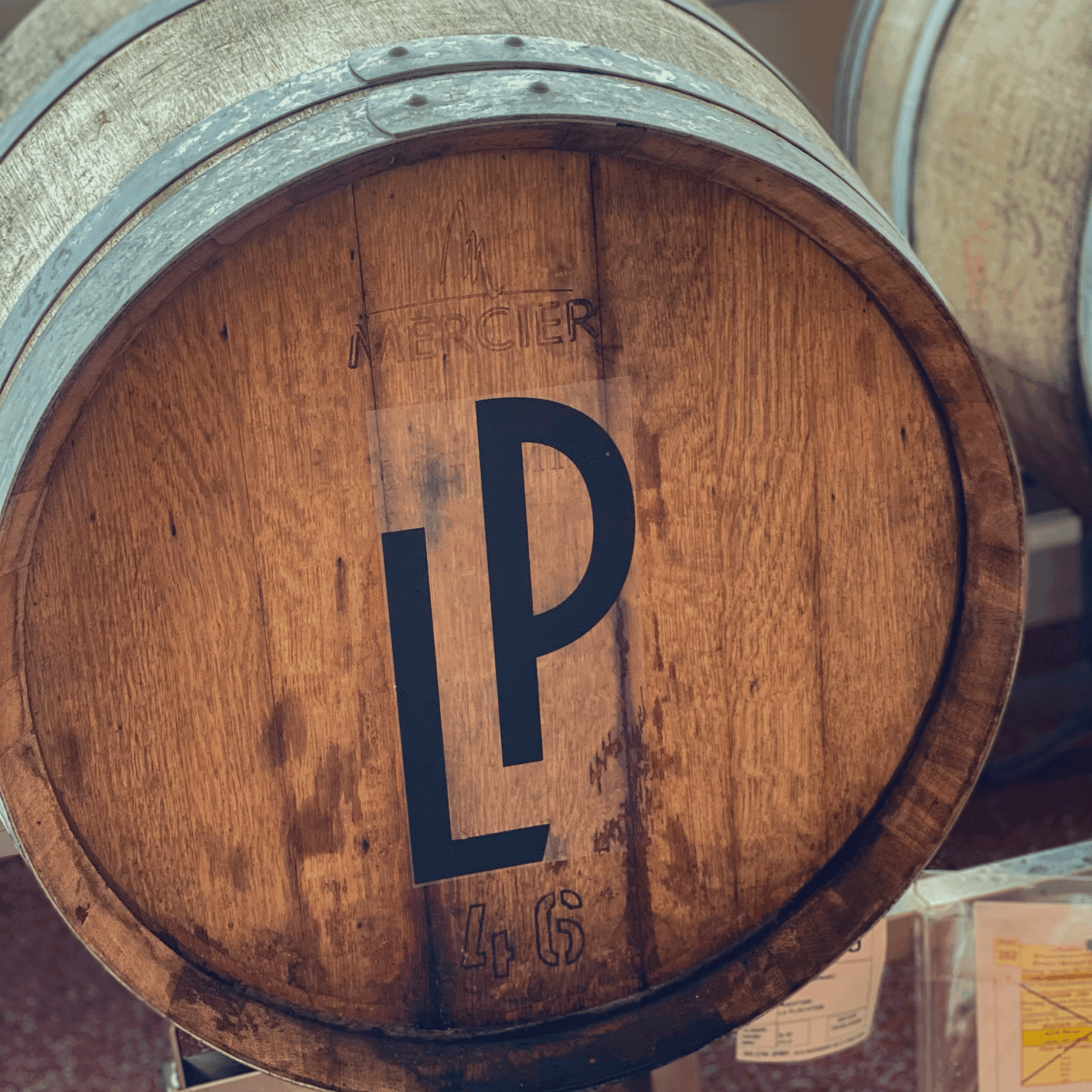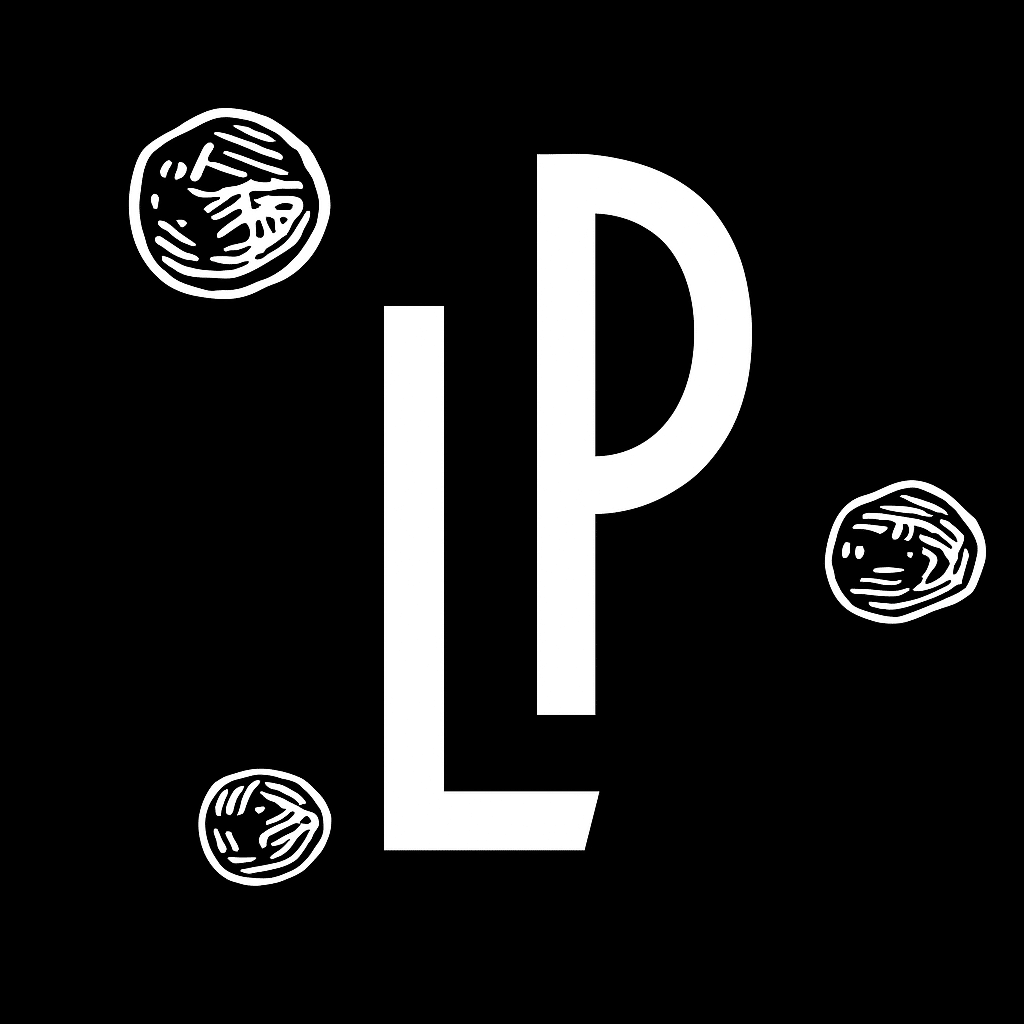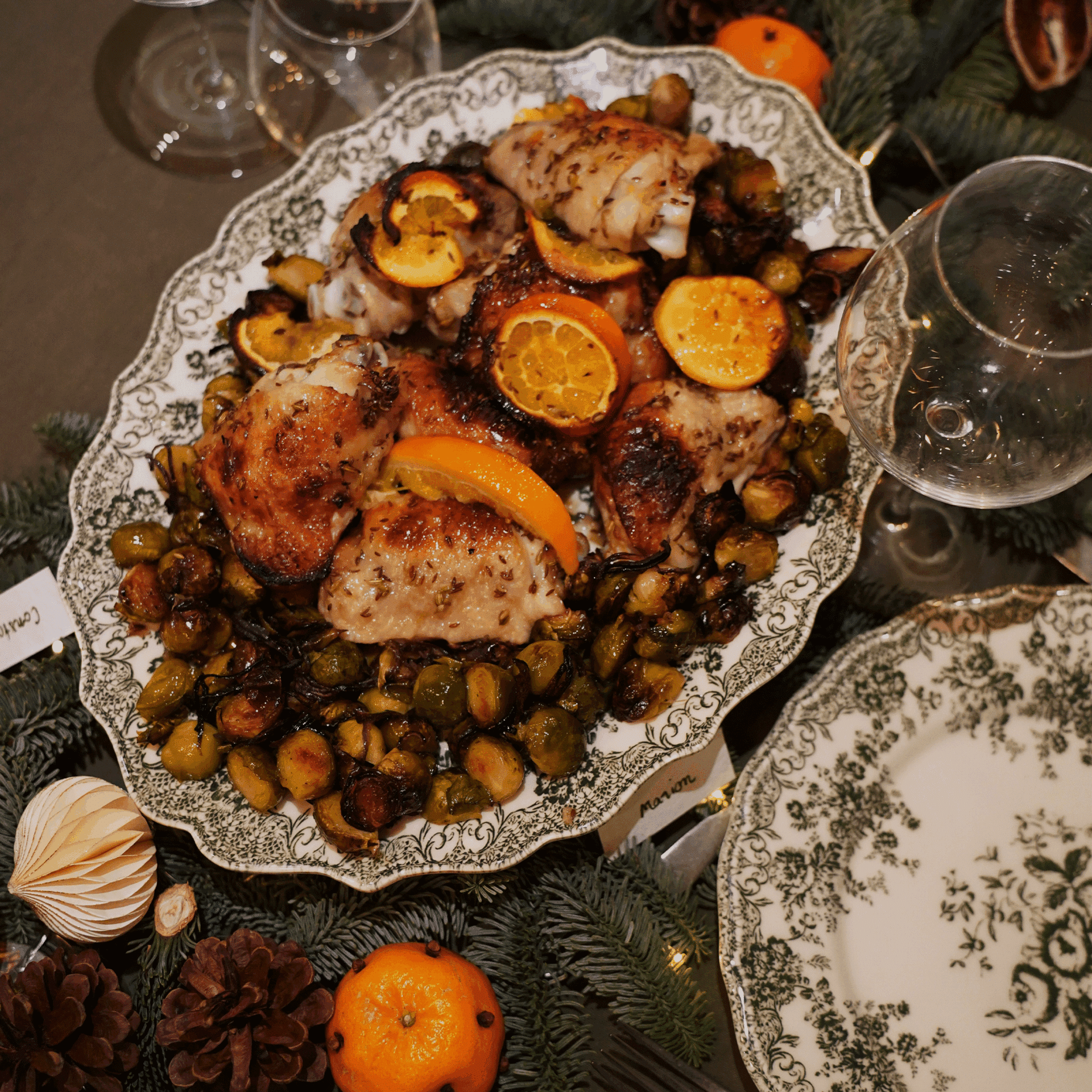
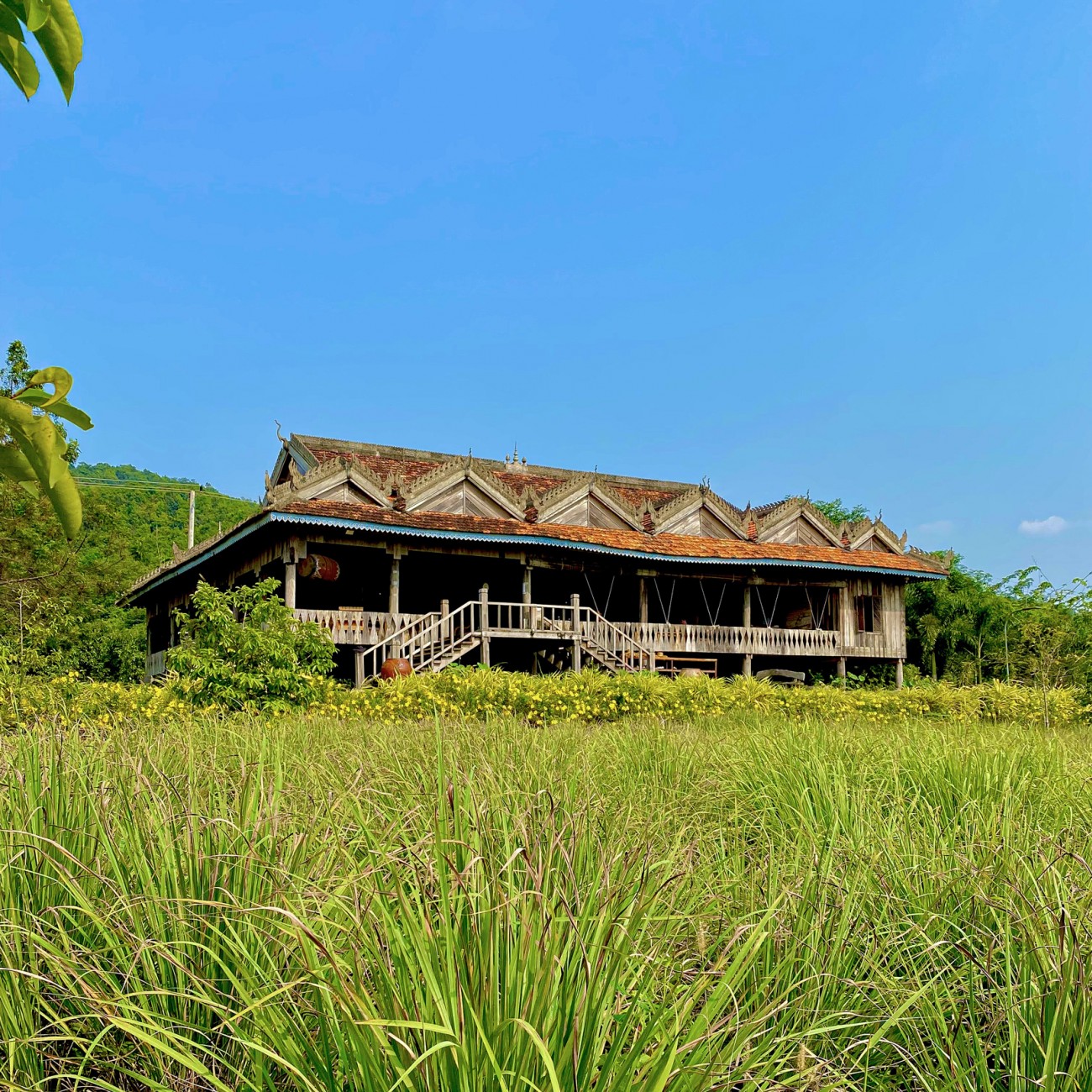
Sala Chan: how to safeguard Khmer architectural heritage
What is a Sala Chan?
We commonly call the buildings where we receive our visitors Sala Chans. They are beautiful wooden buildings built on top of the ground. Traditionally built on stilts, they are protected from humidity in the rainy season, and the family is safe from insects, rodents and snakes. But where does it come from and what is the story behind this Khmer architectural heritage preservation project we launched in 2016?
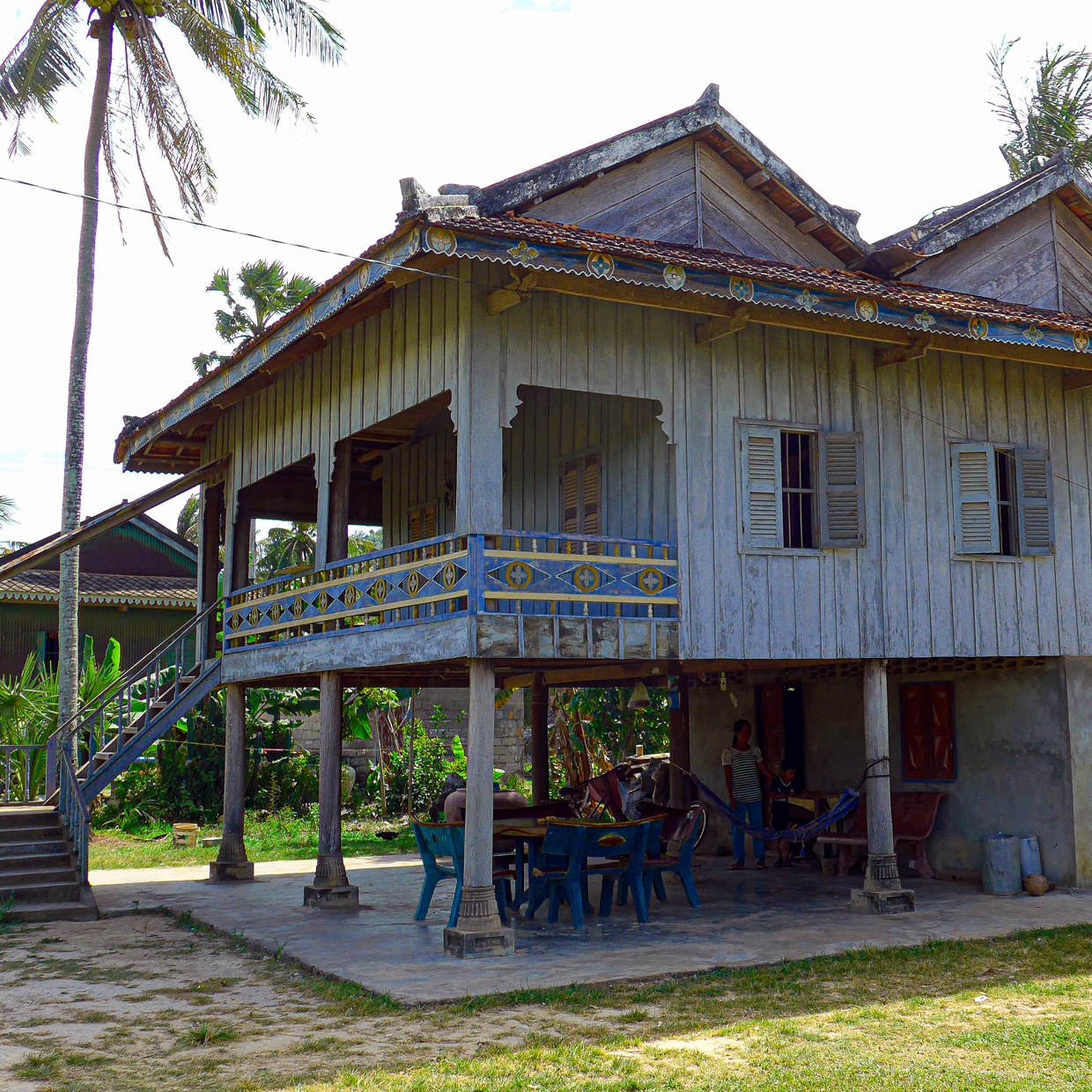
The first house
It was thanks to a Swiss friend who set up and supports schools in Cambodia, that we fell in love with a small traditional Khmer house. It was used as a library in his school in Kep and was about to be demolished. He wanted to save it and offered it to us. Our builder then had to dismantle it, move it and reassemble it in the heart of our farm at La Plantation.
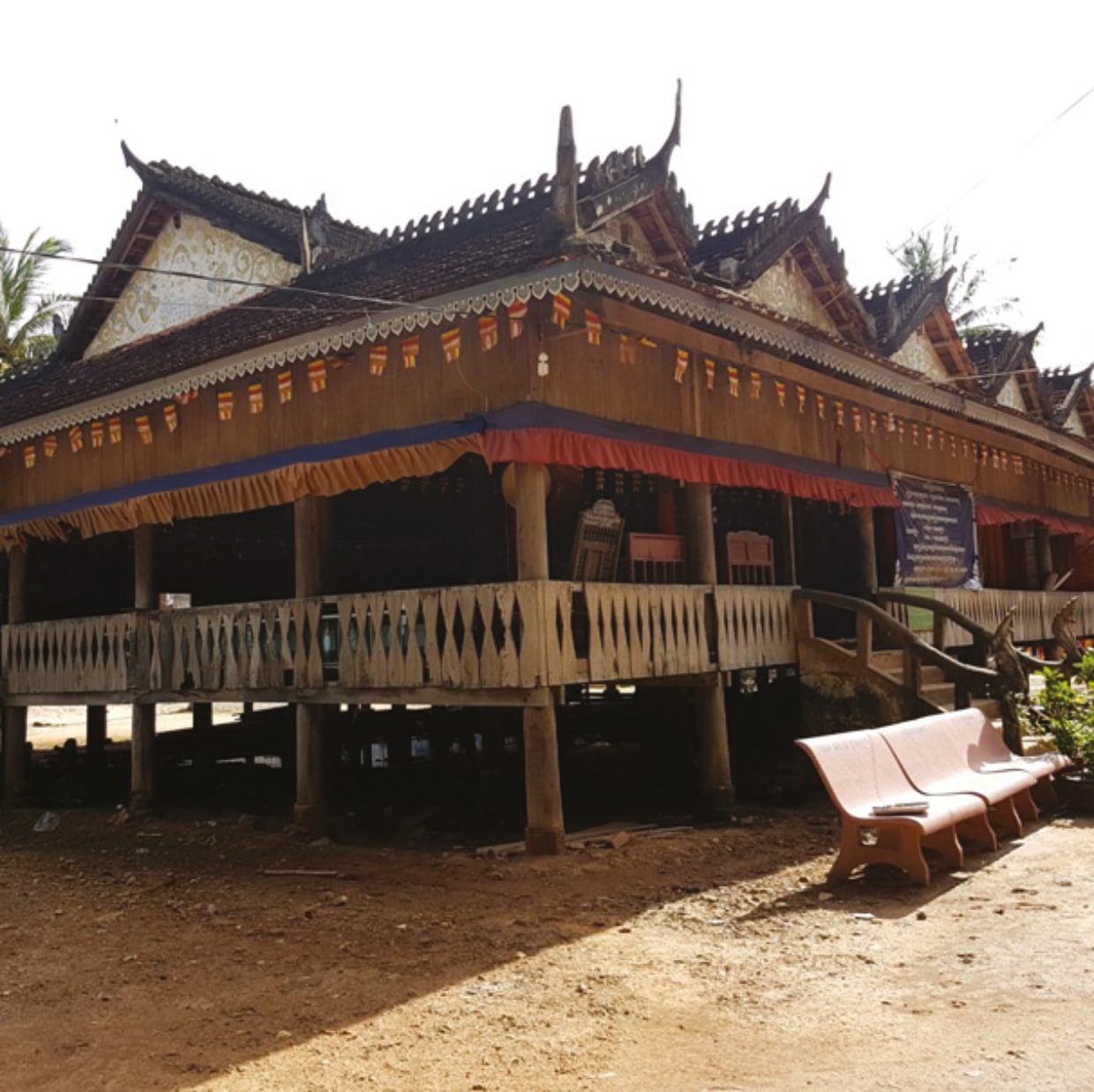
The Sala Chan: in the heart of a Buddhist pagoda
A few months later, a beautiful wooden Sala Chan stood in the middle of the village pagoda. For those who have not yet been to Cambodia, here are a few elements to introduce you to the structure of the pagodas that can be found in all the villages and towns of Cambodia;
Called pagoda or wat, this space is dedicated to Buddhist worship. It consists of a set of buildings, surrounded by an enclosure wall and sometimes by water. Porticos are placed at the entrances to the pagoda and sometimes at the entrance to the road or path.
The most visible, most important and most sacred monument is the sanctuary. Imposing in its height and surmounted by a roof decorated with sculptures of mythical birds, the sanctuary is surrounded by a balustrade and accessible by a wide staircase whose ramps form a Naga serpent. Inside, there are paintings on the wall describing the life of Buddha and in the centre an altar with a beautiful statue of Buddha, where the faithful will come to worship and make offerings.
The second essential building of the vat is the sala, more precisely the sala punya or more commonly the sala chan, where the current ceremonies take place and which is used as a refectory for the monks and laymen. It is a building generally open on three sides. A platform is provided for the monks to perform ceremonies or to have their daily meals.
Within the monastery compound are also living quarters and the village school, and the stupas, funerary monuments for the ashes of the deceased or memorial buildings.
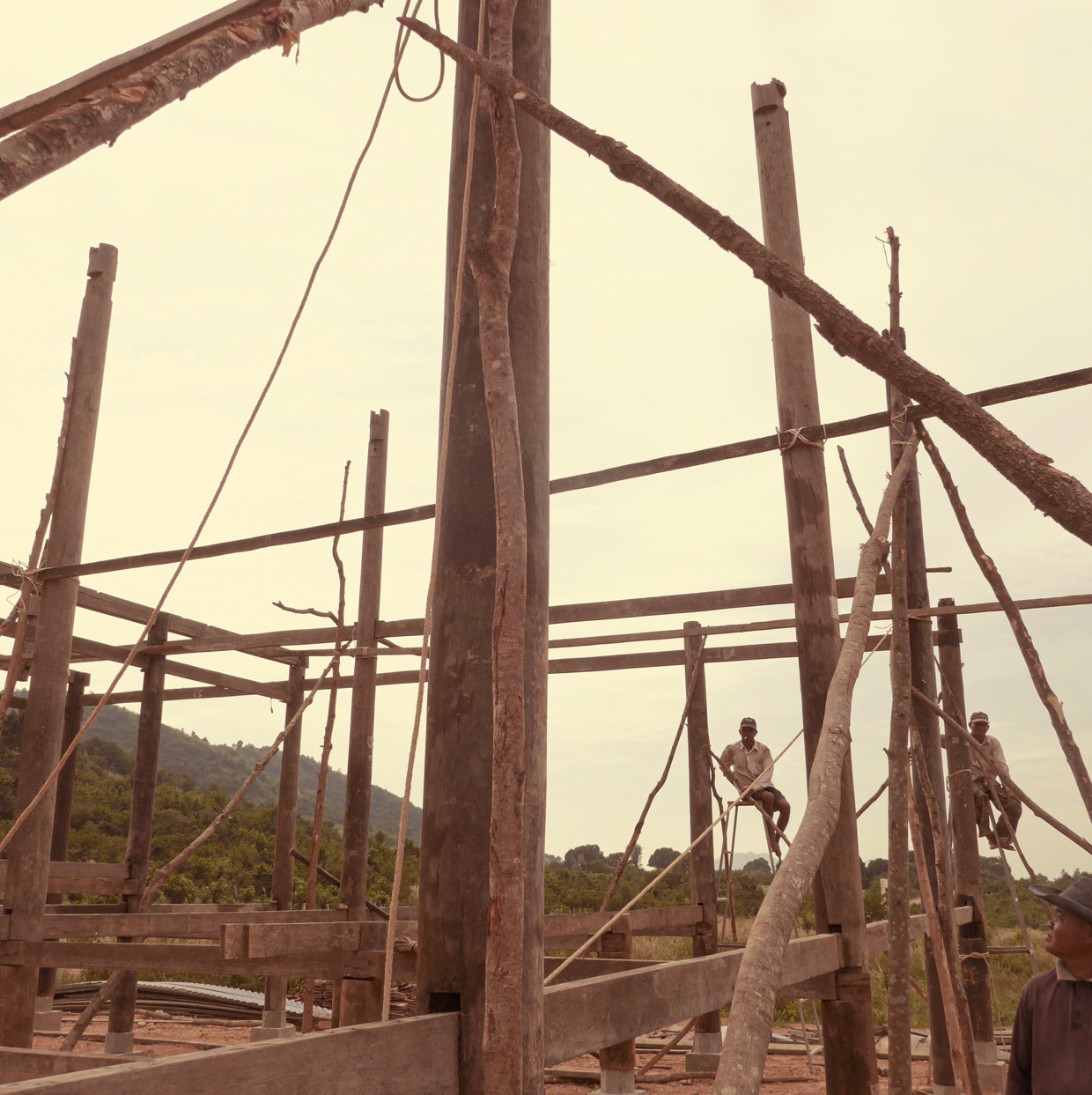
And how did our Salachan arrive at La Plantation?
Let’s go back to our challenge of safeguarding the Khmer heritage, which this second time was more ambitious! In the village pagoda, the Salachan was doomed to disappear as it was replaced by a more modern concrete building. We were shocked to see this traditional building ready to be demolished, and so we decided to offer to buy it back from the community leader, which would allow them to complete the work they had started. All the pieces (pillars, floors, framework, tiles) were taken down, dismantled and transported.
At La Plantation, a reinforced brick structure had to be designed to support the building. Once these foundations were ready, the builders began to reassemble the structure line by line, and then crosswise. It was miraculous to see the 320m2 building rebuilt to its original form, all in mortise and tenon. The floor has a nice patina from the years and the hardwood passages and pillars look to be over a hundred years old.
Our Sala Chan was inaugurated in February 2017, with a blessing ceremony by the monks, who returned to their old Sala Chan on this occasion.
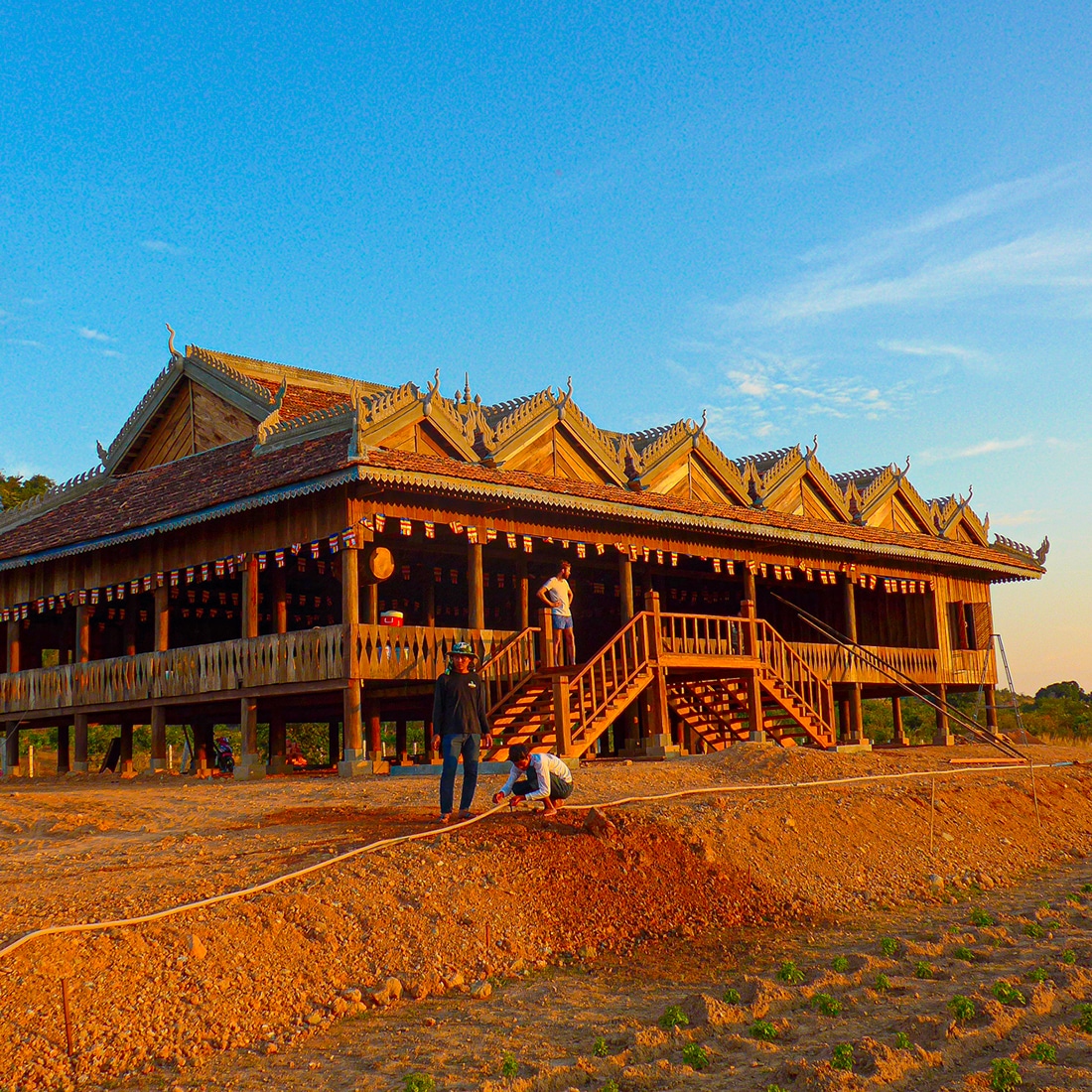
Other traditional houses
We continued our search for traditional houses in the neighbouring villages that were destined to disappear, thus saving a small number of houses from their planned destruction. Some of them are used to house our farmers or our employees in the farm, while others are used for tourist activities: restaurant, cooking classes, amenities…
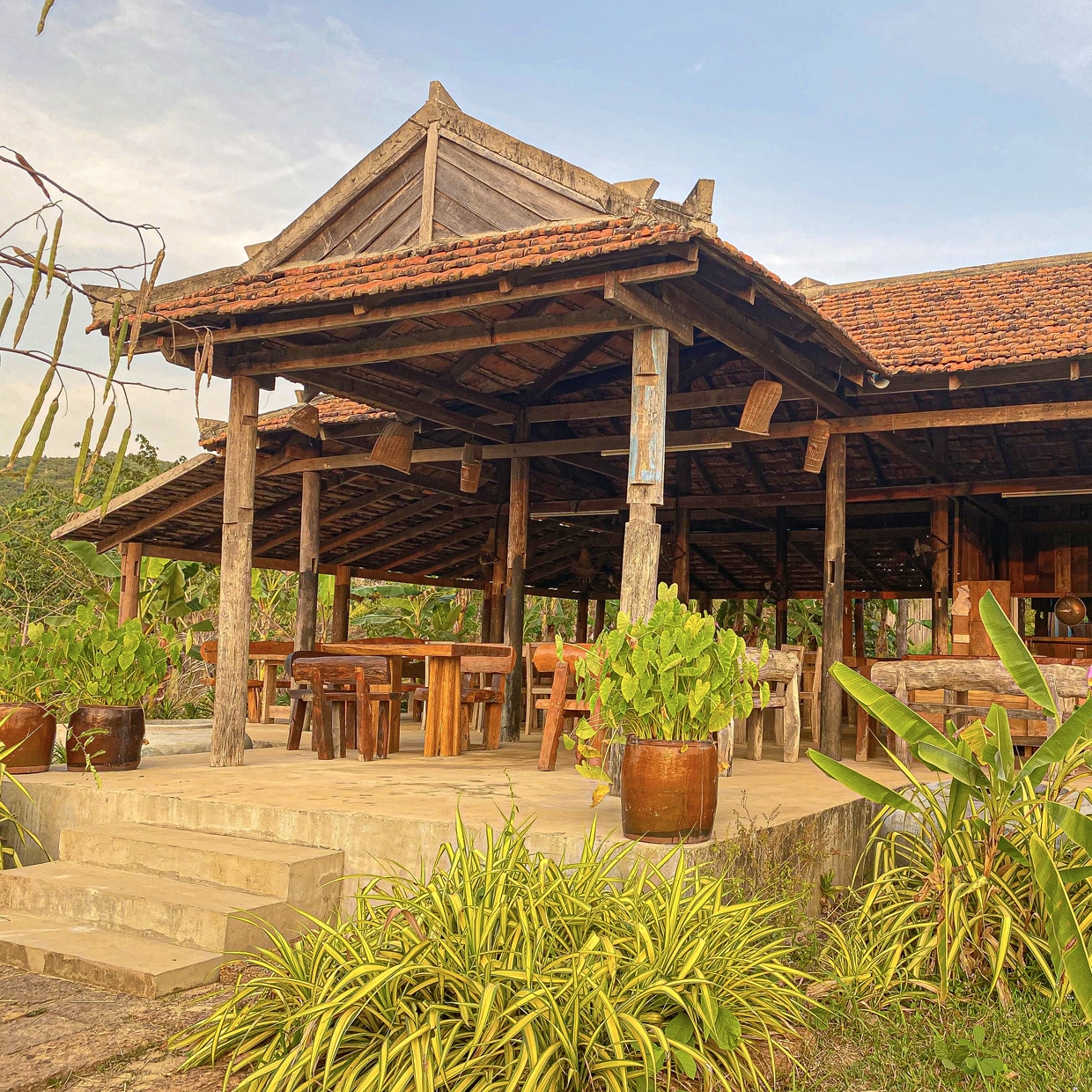
The second Sala Chan
And the latest project was offered to us by a dear friend, who wished to offer the children of the village a structure within La Plantation, in the framework of our association Les Écoles de La Plantation (french). And he offered us the possibility of saving a second Sala Chan, which we found in another village in the province. It is now our Children’s House where the children of the village meet on Saturday and Sunday mornings to attend the English classes that we give them in groups of levels. They have access to a library, games, dance classes and art activities.
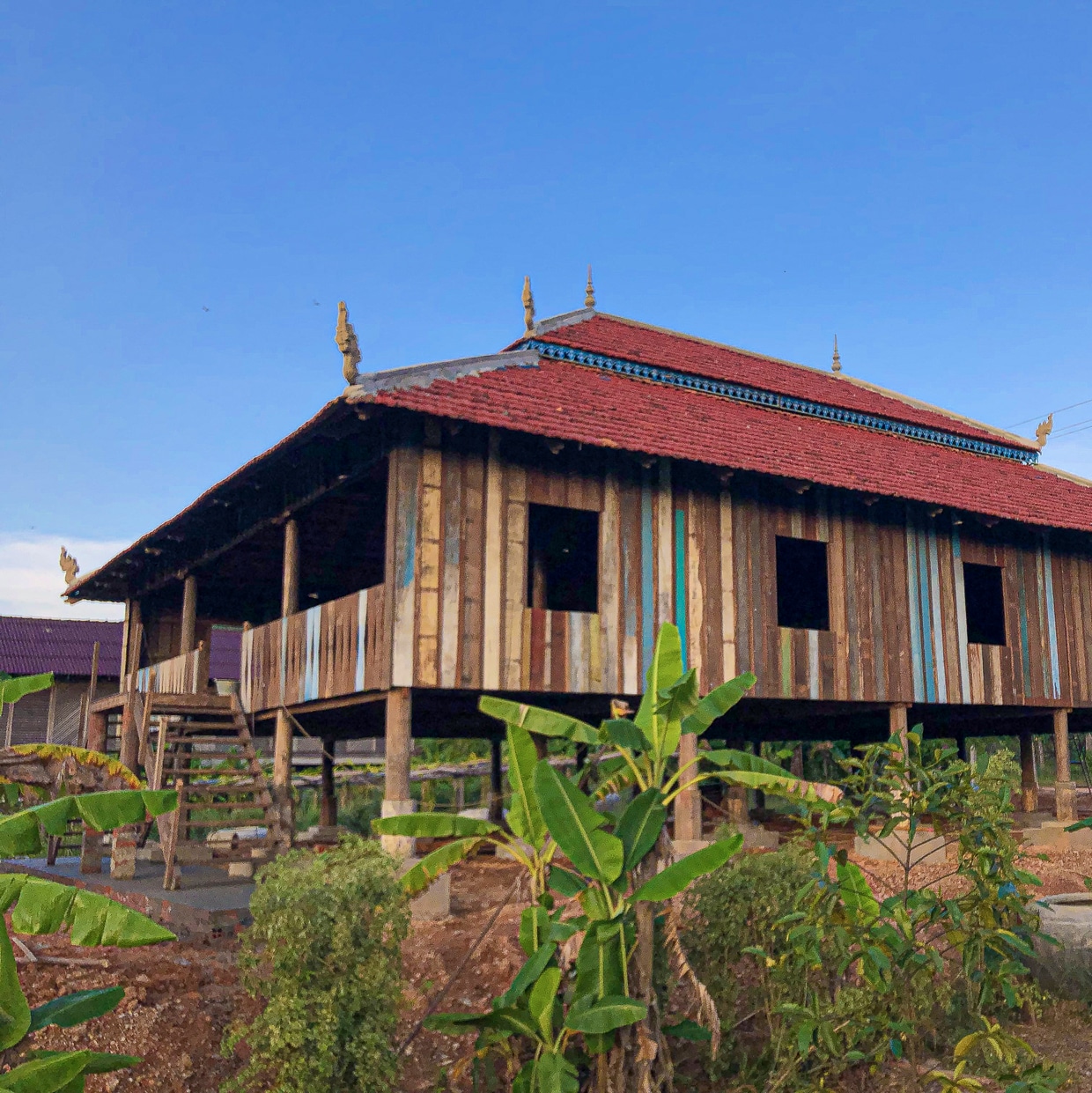
We are happy to have participated in the preservation of these traditional wooden houses that Cambodians from the cities rediscover with happiness when they visit The Plantation. They allow foreign visitors to understand the local and rural way of life in Cambodia.
We hope that reading this will inspire you to come and see this project in person, and look forward to your visit to Kampot!
